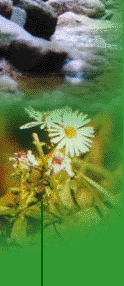Description:
The Black Racer (Coluber constrictor) is a slender black snake. The Black Racer has two subspecies that are native to Georgia
which are the Northern Black Racer (Coluber constrictor constrictor) and the Southern
Black Racer (Coluber constrictor priapus). Both are almost pitched black and have
a white chin. It is really hard to tell the difference except from where they are found. In the northern part of Georgia they are Northern Black Racers and in the southern part of Georgia they are Southern Black Racers. The Northern Black
Racer average length is 3-5ft long, and the record was almost 7ft long. The Southern Black
Racer average length is 2-5ft long, the record length was 6ft long. The juveniles of this snake look very different from their
parents. They usually have a light-colored body with dark blotches, but the lost their pattern when they age.
Habitat:
The Northern
Black Racer can be found in variety of habitats which include rocky outcrops on the side of mountains, in open
forest where a lot of low lying brush is, edge of ponds and streams, rural fields and meadows, under tin and other debris
around abandoned homes and abandoned agriculture sites, and around swamps and marshes. The Southern Black
Racer can be found in all the same habitats as the Northern subspecies and can also be found in the Longleaf saw-palmetto
habitats which is very common in the coastal plain region. Also both sub-species can be found in low-lying tree branches.
Prey:
Both Subspecies will eat a variety
of animals which includes small mammals, frogs, toad, lizards, birds and their eggs, eggs of other reptiles and amphibians,
smaller snakes including venomous ones such as the pigmy rattlesnake (Sisturus miliarius)
and Copperhead (Agkistrodon contortrix). There are even records of the eating small
turtles.
Abundance and Behavior:
Both the Northern/Southern Black Racer
are very common in the Southeast. They are probably the most common snake in the coastal plain region of Georgia. The can be found almost anywhere even in the suburbs and cities. Both
subspecies are very fast and are very quick to get out of your way if you approach them. They are strictly Diurnal
(comes out during the day). They are one of the few snakes that can be found in the middle of summer when it’s in the
mid to high 90s. They are one of the few snakes that love the heat. During the summer they can be found on the roads in the
morning and in the evenings. If picked up they will strike and bite fiercely and repeatedly.



